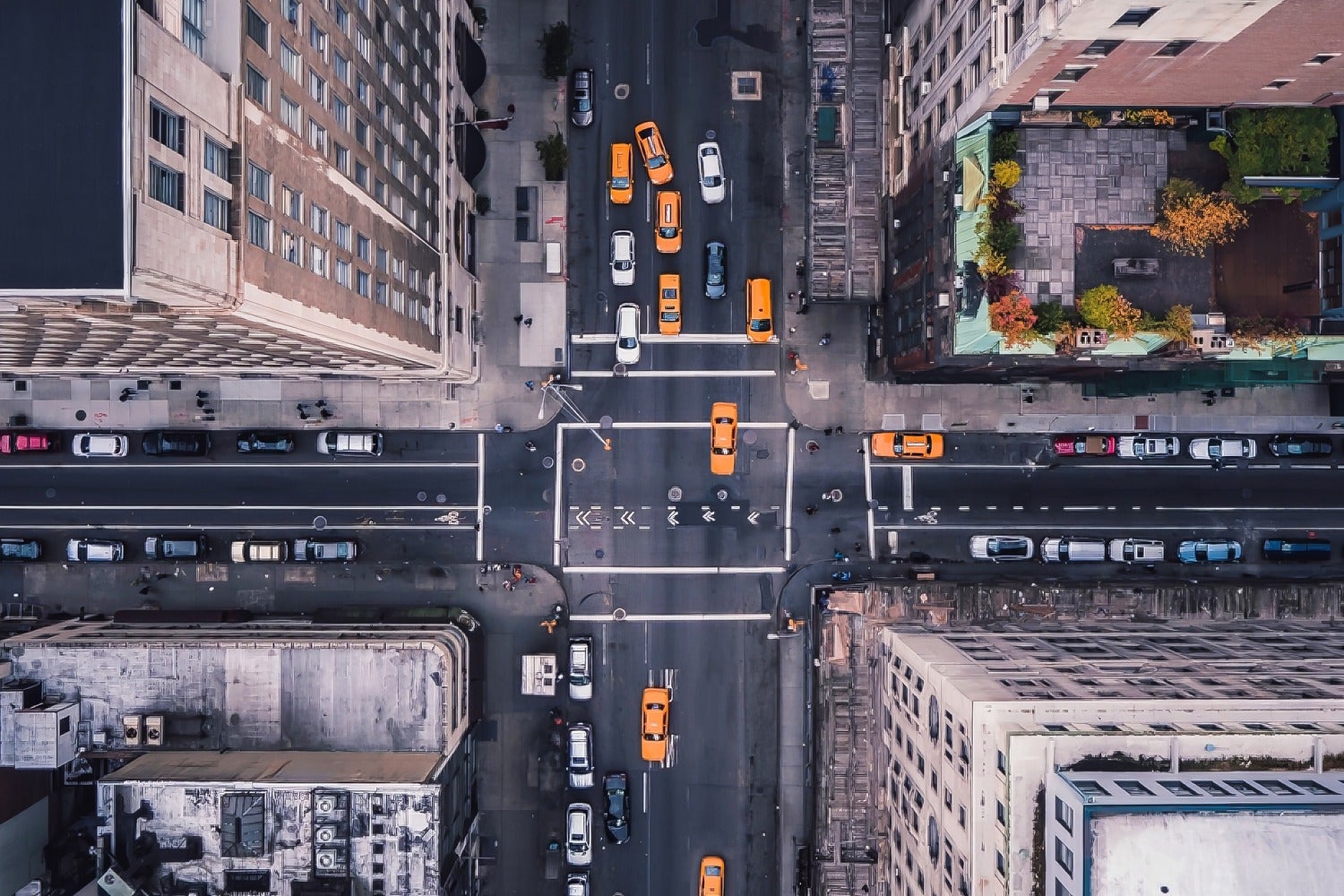Starting on Jan. 5, New York City began charging a congestion toll on vehicles driving into the city’s high traffic zone south of 60th Street in Manhattan. This is the first congestion pricing project in the country, but similar programs have been in place in locales like Stockholm and London for years. The goal is to reduce traffic, cut carbon emissions and air pollution, and raise funds to improve public transit.
Opinions about this policy run the gamut, of course, and misinformation on how the program works—and how it impacts businesses and vulnerable populations—is fueling the debate. Here is some clarity on three of the biggest myths circulating.
Myth #1: Congestion pricing hurts low-income people
About 85% of those who commute into the congestion zone take public transit. Of low-income New Yorkers, that percentage is even higher: One analysis found that only 2% of working low-income people in the city may be subject to the fees. That comes out to 5,000 people, compared with 257,000 working low-income New Yorkers who take the subway or bus.
Of the low- and middle-income New Yorkers who do drive, those who live in the congestion relief zone and make less than $60,000 per year will receive a tax credit that covers the fee. Drivers coming in and out of the area who make less than $50,000 get a 50% discount, and city residents with disabilities (and anyone who drives their family cars) receive a full exemption.
Myth #2: Congestion pricing hurts businesses
Yes, deliveries into this area of Manhattan will face fees ($14.40 for small trucks and $21.60 for large trucks at peak hours) which some businesses say may lead them to raise prices on goods and services or else take hits to their profit margin. But the new policy will also cut traffic-related delivery delays, leading to more reliability and less need for merchants to keep buffer stock on hand, which can be expensive. If the results in New York are the same as they are in international cities, these effects should even out, or even fall in the direction of benefiting businesses. There’s also little credence to the idea that the toll will discourage consumers from entering the area below 60th Street, as the overwhelming majority of people coming into the zone use public transit.
Myth #3: New York’s congestion pricing is perfect
Definitely not; there are many logistical issues. For one example, it can be tricky (but not impossible) to get from Manhattan to Queens without passing through the toll zone. Drivers may end up paying the fee because they dip below 60th Street to get onto the Queensboro Bridge, which connects the two boroughs, even though they may only be in the congestion relief zone for less than a minute. Staying on highways without exiting to street level should help drivers avoid this conundrum.
Another downside: The $9 fee for passenger vehicles during peak hours is much less than the $15 initially suggested by the Traffic Mobility Review Board. Even at $9, the fee is expected to reduce the number of miles traveled in the congestion zone by 6.4% and number of vehicles by 13.4% (that is, however, quite a bit lower than 8.9% fewer miles and 17.3% fewer vehicles expected from a $15 toll). However, it’s set to rise by 33% in 2028 and again by 25% in 2031. And since the fee is already controversial, economists suggest it may be best to start low for the good of future congestion pricing projects across the country.

